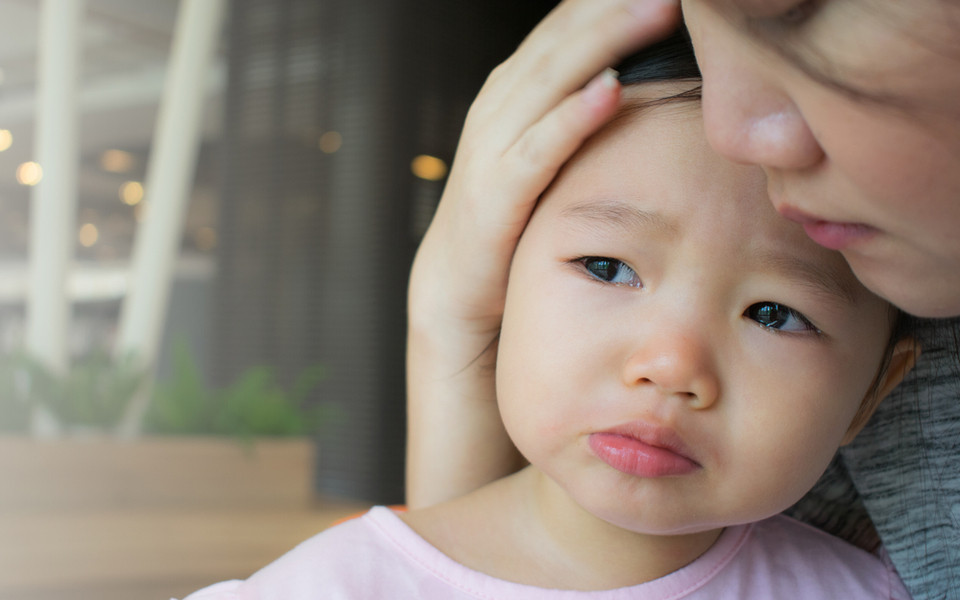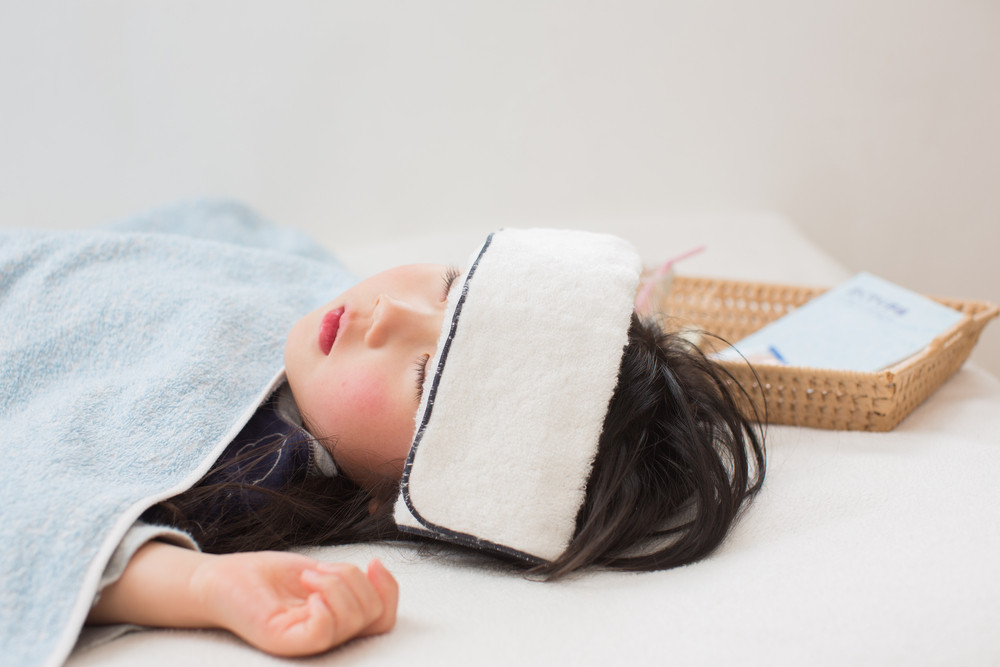
Managing COVID-19 in Children
Although the quarantine measures for COVID-19 have been relaxed worldwide, the infection rate among children and adolescents continues to rise with the spread of the virus. Local data shows that the mortality rate of COVID-19 among children aged 11 and below is more than twice as high as that of seasonal flu, so parents cannot afford to be complacent. Fortunately, most infected children have mild symptoms that can be managed at home, and only a few severe cases require hospitalization.
How can we confirm if a child is infected with COVID-19?
Although the accuracy and sensitivity of rapid antigen tests (RAT) are not as good as PCR tests, the government currently accepts the results of RAT as a diagnostic indicator. If a child shows symptoms, a RAT should be conducted promptly. The viral load may be too low to detect the infection in the early stages, so it is recommended that parents perform RAT continuously for 3-4 days to determine if their child is infected.
Should I send my child to the hospital once diagnosed with COVID-19?
A child with mild symptoms after being diagnosed with COVID-19 can usually be treated at home. Parents should not only pay attention to a child’s single sign, such as whether they have a fever, but also observe their overall condition, such as their appetite, mental state, and whether they experience difficulty breathing. Parents can also arrange for their child to have a teleconsultation with a doctor, who can prescribe medication to alleviate their symptoms. If the fever subsides and the symptoms improve after taking medication, hospitalization may not be needed.
Under what circumstances should an ambulance be called?
1. Difficulty breathing
Children breathe about 30-40 times per minute. It is considered rapid breathing if they breathe more than 40 times per minute. If a child is breathing harder than usual and you can see their ribcage when they inhale while at rest or relaxed, it indicates difficulty breathing, and parents should pay special attention to this.
2. Inability to eat continuously or persistent vomiting
3. Poor mental state after fever subsides, seizures, confusion, etc.
4. Croup
Stridor is a condition where the throat is inflamed and swollen, causing breathing difficulties. Children with stridor may make wheezing sounds when exhaling and have a dry, short, and persistent cough, similar to the sound of a seal. Parents can arrange for a doctor to conduct teleconsultation if a child’s overall condition is still good or their symptoms are mild. However, if the condition is severe, hospitalization may be necessary.
How to use antipyretics drugs for children?

If the temperature is 38oC or higher, general antipyretics drugs such as paracetamol (acetaminophen) can be taken every 4 hours.
If the temperature is 39 oC or higher, ibuprofen (e.g. Brufen) can be taken every 6 hours.
If the temperature is 39.5 oC or higher, suppositories such as diclofenac should be given.
Some children may experience febrile convulsions (or febrile seizures) due to the sudden rise in core temperature, which may concern parents. About 60% of children will experience more than one febrile convulsion caused by fever, often in children between 6 months and 5 years old. Fortunately, the febrile convulsions caused by fever are usually harmless and will not have long-term effects on the brain. The leading cause of fever is viral infection, so it is crucial to address the root cause of the disease.
Cold hands and feet are an early sign of fever. If parents notice their child's hands and feet are cold or shivering or complain of being cold, they should take their temperature. As the fever progresses, the coldness in the hands and feet will gradually disappear with the increase in body temperature. After taking antipyretics, the body will start sweating, which is a sign that the body is cooling down. Parents should follow the instructions to give the child the proper dosage of antipyretics, as overdosing can lead to drug poisoning. It takes about half an hour to an hour for the drug to take effect. If paracetamol is ineffective, please wait at least one hour before switching to ibuprofen and at least 3-4 hours before switching to diclofenac suppositories.
If it is not yet time for the next dose of medication, but the child’s temperature continues to rise, what should be done?
Parents can use lukewarm water to sponge the child's body, with the goal of letting the water evaporate and take away the heat. This method is most effective during the middle stage of fever and can be used as often as necessary.
How to tell if the child is recovering?
First, observe the child's mental state, and second, record the highest body temperature daily. If the highest body temperature starts to decrease slowly every day, it is a sign that the child is gradually recovering. The child's body temperature may fluctuate, and parents should record the time interval between each increase in temperature. If the interval gradually lengthens, it is also a sign that the child is recovering.
How to deal with a child having febrile convulsions?
About 1 in 100 children with a fever will experience convulsions, possibly accompanied by vomiting. Febrile convulsions generally subside within 1 minute and last no longer than 5 minutes. When a child has convulsions, they should be placed on their side to prevent the airway from being blocked by vomit. Children having convulsions will not bite their tongues, so parents should never put their fingers or other objects in the child's mouth.
When can a child get vaccinated after recovering from COVID-19?
According to the guidelines of the Department of Health, children diagnosed with COVID-19 should wait 3 months after recovery before receiving the BioNTech or Sinovac vaccine.
At what age can a child use lozenge to relieve throat discomfort?
Throat lozenges are generally recommended for children aged four or above. Children under 4 years old may not have developed the swallowing reflex and may be at risk of choking or accidentally swallowing the lozenge. Children under four can only rely on pain relievers to ease their discomfort.
How to relieve a child’s nasal congestion?
Doctors may prescribe oral antihistamines or nasal sprays to relieve nasal congestion. Parents can purchase them at a pharmacy or request a prescription from a doctor during a telemedicine consultation.
What medications should parents prepare for occasional needs?
- Antipyretics of different strengths
- Medication for runny nose and cough relief
- Medication for cough and nausea
How to avoid cross-infection at home if a child is infected with COVID-19?
Besides reducing the risk of transmission, vaccination is crucial in preventing severe illness. Therefore, the primary measure is to get vaccinated with COVID-19 vaccines. Individuals aged 12 or above should receive a booster dose of the vaccine as soon as possible, even if they have received two doses of the COVID-19 vaccine.
Household members should pay attention to the following three points to reduce the risk of transmission:
1.Wear a mask
2.Wear eye protection
3.Wash hands frequently
It is recommended to separate older adults and the infected child as much as possible by avoiding face-to-face communication, not sharing food, etc., to avoid close contact.
The symptoms generally last for about a week after infection. After that, a rapid test can be done again. A negative result implies that the infectivity of the disease is relatively low. If the result remains positive, home isolation should continue, and rapid tests should be conducted regularly. If the results are negative for two consecutive times, the situation can be considered safe, and isolation measures can be reduced.
Read more:
-
Speciality services - Paediatrics Paediatrics Respiratory
-
Telemedicine - Telemedicine